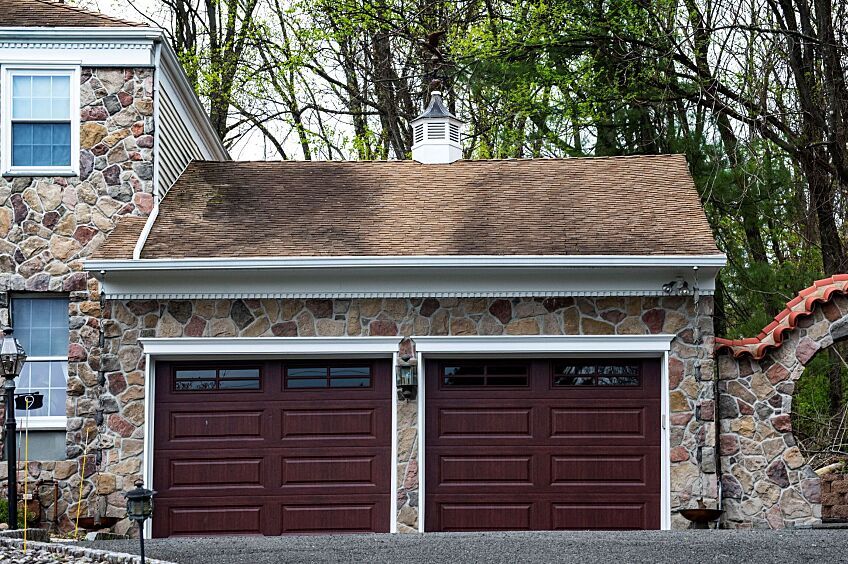Many homeowners don't know that the unsightly black or brown stains they see on their roofs may be due to blue-green algae. They tend to think that the roof stain is simply dirt or how shingles age and that there's little that can be done to prevent it. But when made aware of the problem, our survey* found that many homeowners would invest in products that help protect against it, which will help you expand your offerings.
Interested in upselling your customers while providing them with a roof they'll genuinely love? Here are some talking points you can use to help them see the importance and benefit of algae-fighting technology.
Addressing Algae Myths
The first step in educating your customers about algae is addressing commonly held myths about the cause of "roof stain." As a roofer, you know dark streaks aren't usually a result of dirt or mold but are the result of Gloeocapsa magma—the most prevalent type of blue-green algae to impact roofs.
However, your customers may not be as knowledgeable on this topic. When planning a roofing project, talk to your customers and dispel commonly held misconceptions about blue-green algae. Below are some useful facts from the Asphalt Roofing Manufacturers Association that you can use to help raise awareness among homeowners:
Blue-green algae grows on all roof types all over North America
Blue-green algae flourishes the most in warm, humid conditions (but can grow anywhere)
Spores travel by wind or on animals and will commonly impact clusters of neighboring homes
Blue-green algae most often grows on the north and west sides of a roof
By the time blue-green algae is visible, it has usually been present for several months
Once present on a roof, the black streaks will continue to grow and spread, downgrading curb appeal and potentially impacting home value
It's important for customers to know that certain roofing products can reduce the risk of blue-green algae staining. As their contractor, you're instrumental in getting the right preventative algae-fighting products on their roof. Many customers aren't aware that the only other way to address blue-green algae stains is through roof cleaning.
Roof cleaning probably sounds simple to most homeowners, but it's definitely not the ideal solution for algae roof stains. Be sure to let customers know that removing algae stains through cleaning can be difficult and that algae discoloration is likely to reoccur, according to the Asphalt Roofing Manufacturers Association.
Always advise customers to follow the manufacturer's instructions for roof cleaning and make sure they know that pressure washing could damage the shingles. For safety reasons, roof cleanings are best done by professionals.
Offering Algae Protection
Now that you've let your customers know about the problems caused by blue-green algae and that products with algae-resistance technology exist, you can make them aware of what options are available to them.
You've likely used traditional algae-resistant shingles. These shingles use granules that contain a layer of algae-fighting copper that is released onto the roof when it's wet. As the roof ages, those granules release less copper, reducing the shingle's algae resistance.
Fortunately, technology is ever-advancing and new products offer more advanced copper delivery methods. For example, GAF's Time-Release Algae Fighting technology—available in a number of GAF shingles—uses specially engineered capsules infused with thousands of copper microsites that release copper efficiently over time for long-lasting algae-fighting power. It's algae resistance so powerful it allows GAF to offer 25- and 30-year warranties against blue-green algae discoloration:
25-year StainGuard Plus™ Algae Protection Limited Warranty**—available on many GAF shingles including on the bestselling Timberline® HDZ Shingles and Designer shingles, as well as on ridge caps and visible starter strips.
Timberline® Shingles
Designer Shingles
Ridge Cap Shingles
Starter Strip Shingles
30-year StainGuard Plus PRO™ Algae Protection Limited Warranty***—available only on Timberline® UHDZ™ Shingles with patent-pending Dual Shadow Line (which creates a sunset shadow effect for extra dimensionality). These shingles come with 10% more Time-Release Algae-Fighting Technology than GAF StainGuard Plus™- labeled shingles and are the only shingle that GAF currently offers with a 30-year warranty against blue-green algae discoloration.
Adding shingles with breakthrough algae-resistance technology to your offerings can be a big win for you and your customers alike—broadening what you can sell while also helping to protect your customers' roofs from blue-green algae discoloration for years to come.
*Based on a 2021 survey commissioned by GAF of 500 homeowners in areas with moderate to high amounts of blue-green algae.
**25-year StainGuard Plus™ Algae Protection Limited Warranty against blue-green algae discoloration is available only on products sold in packages bearing the StainGuard Plus™ logo.
***30-year StainGuard Plus PRO™ Algae Protection Limited Warranty against blue-green algae discoloration is available only on products sold in packages bearing the StainGuard Plus PRO™ logo. See the GAF Shingle & Accessory Limited Warranty for complete coverage and restrictions.

